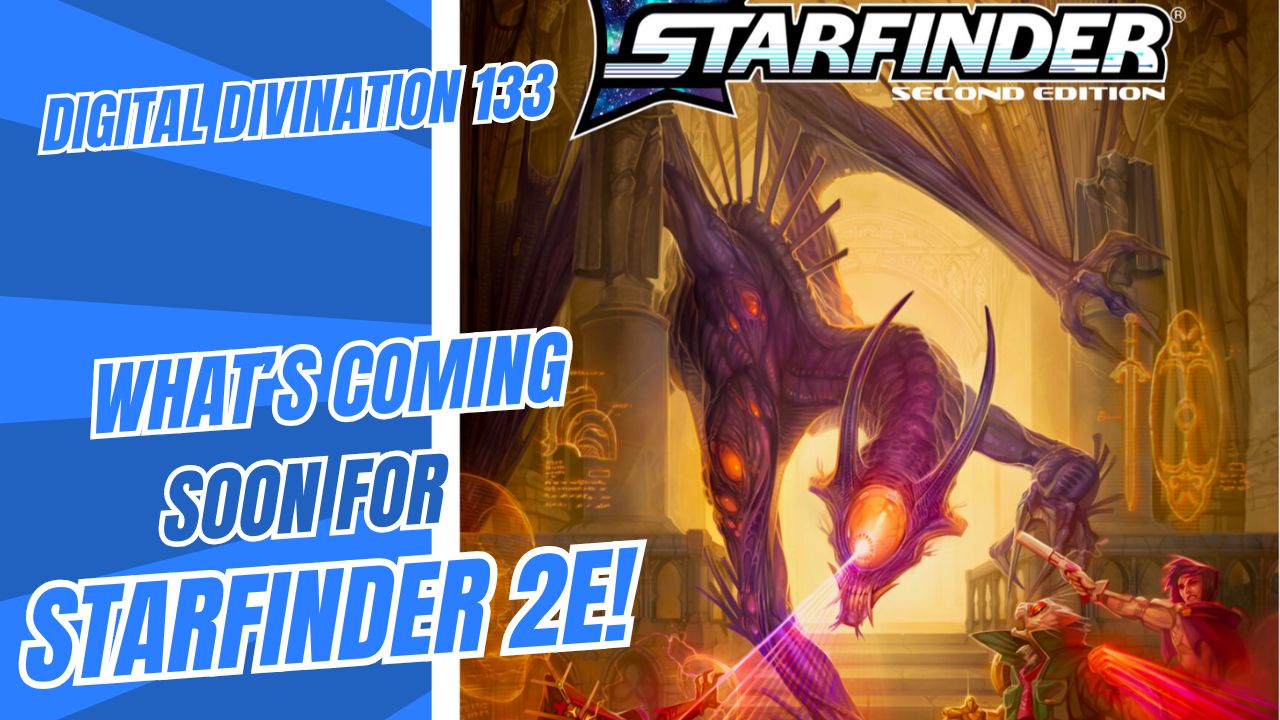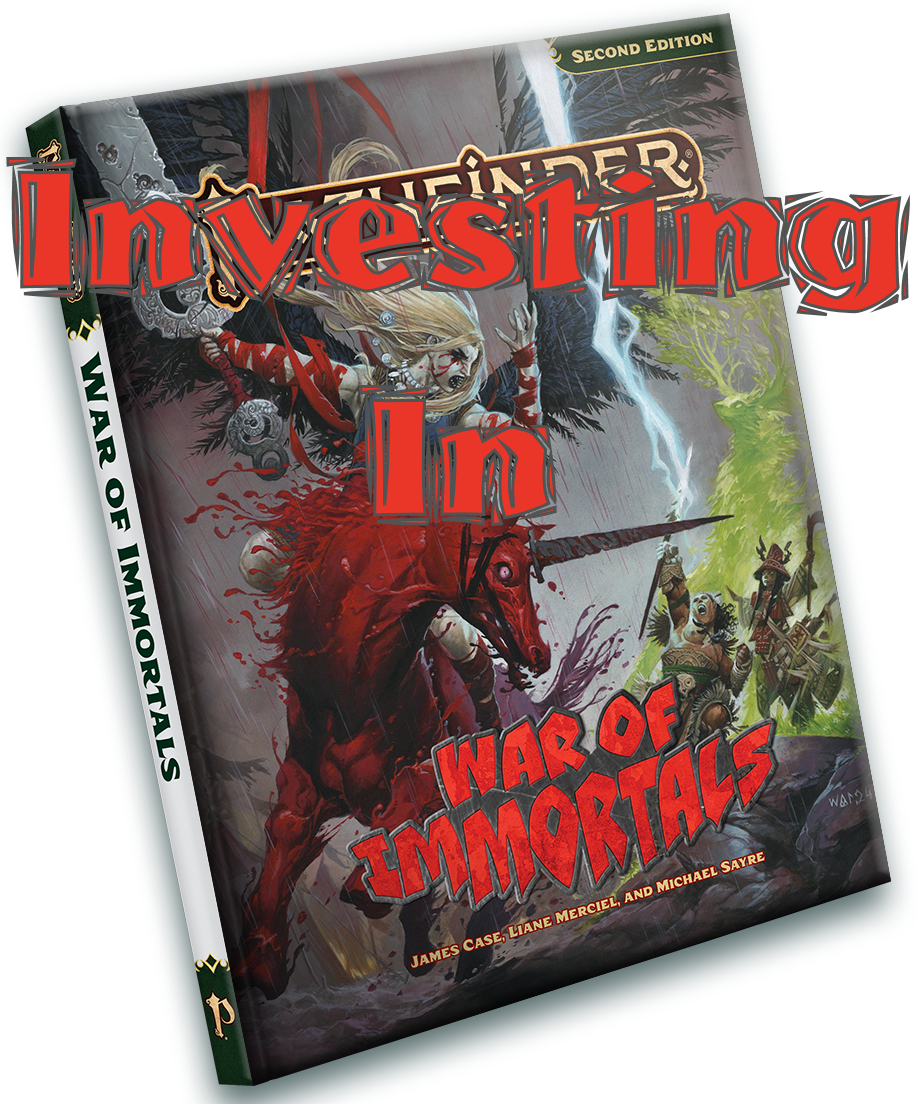I thought I should do something special for the twentieth book I review. I decided to dust off a classic book that helped define how I DM. Technically 3rd edition, it’s reasonably 3.5 compatible, and a book that remained popular long after 3.5’s launch. This is the first Dungeons & Dragons release with content so mature, it needed a special label. And truly, is there anything more terrifying than the Book of VD?
STD humour aside, this sourcebook has a lot of stigma around it. It’s as though Wizards of the Coast did a census on every topic that makes decency groups object to Dungeons & Dragons and then wrote rules for them. Ritual sacrifice, demon worship, drug addiction, sadomasochism, torture. This book is fueled by the foulest material, all of which regularly appears in popular fantasy, but is deeply taboo for impressionable minds.
At a Glance
The Book of Vile Darkness features the darkest cover in the D&D library, appropriately enough. A black and crimson wing and evil rune motif, with skull-shaped bolts, the cover is deeply unnerving. But the most prominent feature on the cover isn’t the colours or the design, it is the small black sticker in the upper right corner. “WARNING! Content is intended for mature audiences only.”
The interior artwork is a nice mix of horrifying and awe striking. The Goblin Pits of Io-Rach pg 22 is a bleak take on the normally rascally goblins, and a great illustration of the mutating chemical pool described above it. There is no finer piece of artwork in the book than on page 112. A dwarf slays an angel, divine blood shooting everywhere. The colour choice and emotion elevate the quality of this piece.
The header for Chapter five: Prestige Classes, what looks to be a Cancer Mage, is the most depraved picture in all of Dungeons and Dragons. A disproportioned cannibal with a massive goiter looks delighted as he prepares to feast on a rotting corpse with maggots pouring from its eye sockets. Cringe inducing.
Finally, a more traditional piece of fantasy artwork, but awesome nonetheless, is the Crushing Fist of Spite on page 90. If you didn’t want to cast the spell after reading the description, maybe seeing a gargantuan fist punching your foes into paste from the heavens will change your mind.
A note about nudity. There are some bare-chested women in the Book of Vile Darkness. I objected to the breasts shown in the Monster Manual because that’s an all ages book. But they fit right into the Book of Vile Darkness. Keep in mind, this isn’t play boy. This isn’t even the Sears catalogue. But if you’re the type that gets excited by any boob, congratulations.
Highlights
It Delivers
The content in this book is so evil it could give nightmares even to those with bent imagination. The Book of Vile Darkness pulls no punches when it comes to horrific images and ideas. I don’t think any other sourcebook ever published for D&D speaks about rape, let alone as bluntly as this one does.
This is a high point? If you’re buying the Book of Vile Darkness, hopefully you won’t be upset that there is a lot of really bad stuff inside. This is the book for DMs looking to add darker elements to their games, from new depths of evil villains to possessing PCs, there are rules in here. There are rules in here for acts you could not dream up, like sadists gaining natural AC bonus because they are so scarred and scabby. Better yet, it fully outlines how diseases and poisons work, rules that should have been included in the DMG, especially the 3.5 DMG that was released after this book.
As deplorable as the Book of Vile Darkness gets, it is wisely written in a tone that constantly reminds readers that this is a game, that these are terrible acts that are only done by the worst people ever. The introduction even implies the book only exists because no one playing D&D could be so cruel as to think up any of this on their own. And let’s face it, it has been a long time since D&D was seriously considered the devil’s game. When the Dungeons & Dragons animated series is syndicated on the Disney Channel, you know the taboo is gone.
Endless Material
The Book of Vile Darkness is almost two hundred pages that feels like five hundred. Even with a fluff chapter on the nature of evil and forty pages outlining ubervillains know as Lords of Evil, there is plenty of room for prestige classes, feats, spells, monsters, and even new game mechanics. Fat with content that all fits the theme, the Book of Vile Darkness is organized on a level all sourcebooks should aspire to.
Check out the Juicy Bits section of this review for an idea of just how much great material you can find in this book.
For DMs Only
There are a lot of sourcebooks that are for Players up to a certain point and then for DMs the rest of the book. The Environment series is a good example of this. Not the Book of Vile Darkness. It states right at the start that this book is for DMs only, and the content supports this. Every sourcebook is technically for at least players and DMs because a DM has access to every option in the game, but there are far more sourcebooks that are generally more-player oriented than DM oriented. It’s nice that every so often, Wizards releases a sourcebook like this that is exclusively for DMs. There is an appendix at the end for handling evil PCs and evil parties, including helpful tips on hiding ones evilness and insight into how evil characters regard friendship. It’s the smallest section in the book, tucked away from valuable DM only information. Frankly, it’s material that deserves to be covered and fits this sourcebook, so it’s forgivable that a little PC content made it into the secret DM club.
Low Points
Weak prestige classes
There are nineteen prestige classes introduced in the Book of Vile Darkness. Sadly, few are well executed good ideas. Most of them are based around being disciples or thralls to devils and demons, and they’re similar. Many of the more original ideas don’t pan out, like caster prestige classes that don’t increase caster level. There are a couple of real winners, but in this case, they’re the exceptions.
3rd edition
It isn’t the Book of Vile Darkness’ fault, but we are talking about a third edition release. If you’re looking for okay with working past a few anomalies, and balancing outdated rules, there’s nothing to worry about. If you prefer books you can plug and play in your game, it isn’t as easy as that.
Example Heavy
They may have packed the Book of Vile Darkness to the bursting point with useful material, but imagine how much more we could have got without so many examples in there. Unless you’re running an epic campaign, you’ll never use most if any of the Lords of Evil. And between the villain types and the example villains, there are a number of pages that could have been used more usefully. That said, the Dread Emperor is one of the most thought-out sample characters in any sourcebook, and the other example villains are right up there.
Juicy Bits
Skim and you’ll miss two new races, the Vashar (evil humans) and the Jerren (evil Halflings). The concept may not at all original, but the origins of both these races are fantastic, ripe with potential storylines.
All of Chapter 2: Variant Rules’ diseases are impressive, but the description for Deathsong is cringe inducing. There are also five new diseases (acid fever, fire taint, frigid ravaging, lightning curse, and sound sickness) that players can catch when overexposed to energy.
Traditionally, material components are simply requirements for certain spells to work. The new special material components add dimensions to existing spells by potentially applying metamagic effects when they’re used in the casting of the spell, like a humanoid heart potentially increasing effective caster level.
The Life Drinker and the Soul Eater are the cream of the prestige class crop in Book of Vile Darkness. They grow more powerful when they bestow negative levels, effectively tipping encounter scales of power in their favour.
Absorb Mind is a divination spell that gives the caster access to some of the memories of the previous owner of the brain he just hate. And Wither Limb targets body parts, reducing speed drastically or rendering an arm useless.
Finally, a new breed of aberration introduced in Chapter 8: Evil Monsters: The Kython. What’s not to love about a colony of carnivorous reptile-insects lead by a Slaughtermaster?
Personal Experience
I used a Cancer Mage as a reoccurring villain in my first campaign. The name may imply it is a caster prestige class, but mechanically it works best for rogues. Because I wanted my cancer mage to be a mage, I had to make some adjustments to the class. At high level, I had him cast whirlwind of teeth, summoning a variety of fangs to chew on all the PCs in a row. It killed an important NPC. This spell has been Spell Compendiumed, but the flavour was rewritten. Now the spell summons a hurricane of piranha, which just does not provoke the same gut reaction.
The Vaath is a horrific monster, one of the most depraved ideas featured in the Book of Vile Darkness. It is a psionic creature that devours its prey alive, projecting its senses psionically as it does so. This can cause ability damage to those in the area, and it means the last sensation the eaten creature felt was a mix of agony and its own taste. I used this monster once, and it worked exactly the way it was supposed to.
One of my most memorable plot turns was rain of blood. I’d forgotten that this idea was inspired by a passage from the Book of Vile Darkness. Inspiration is this sourcebook’s greatest strength.
Overall
Nothing else in the 3.x sourcebook library compares to the Book of Vile Darkness. One of the most useful tools for an older DM that wants to terrify its players. If you are a mature gamer and your groups Dungeon Master, I can not recommend this book enough.
If You Liked This Book…
You will be disappointed by the Book of Exalted Deeds, the supposedly mature good twin of the Book of Vile Darkness. The usefulness of the material in that sourcebook is overshadowed by its failure to justify the warning on its cover.
Another DM book that sets an evil tone is Heroes of Horror. Tired of fantasy adventure? Want to try fantasy horror? Heroes of Horror is your book.
I haven’t read it yet, but Exemplars of Evil seems to be along similar lines as the Book of Vile Darkness.




Leave a Reply